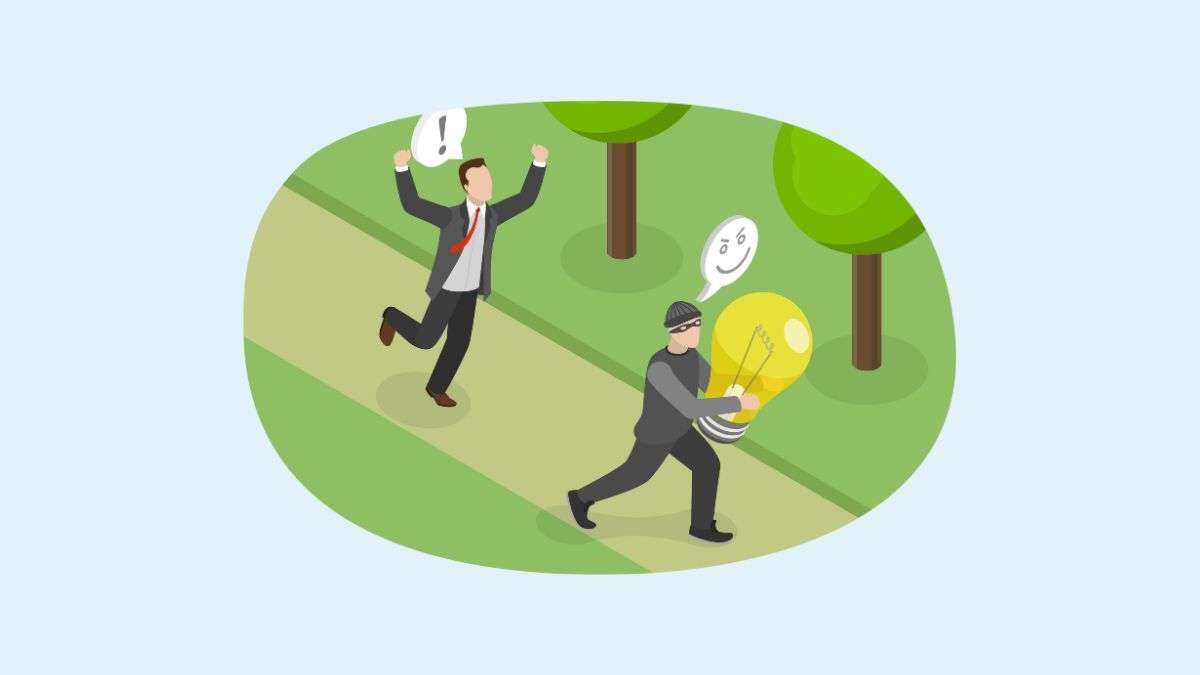Table of Contents
- Introduction
- Understanding Plagiarism in Publishing
- Assessing a Famous Plagiarism Case Study
- The Da Vinci Code
- Lessons from Cases of Plagiarism in Publishing
- Conclusion
Introduction
Plagiarism has been an ongoing issue in the publishing industry, with several high-profile cases garnering much attention and debate over the years. Analyzing these cases of plagiarism in publishing is crucial for understanding the ethical implications and learning how to strengthen integrity in publishing. This introduction will highlight the significance of examining plagiarism cases and preview the specific cases explored further in this blog post.
Looking back at infamous cases of plagiarism provides important lessons about upholding ethics and accountability in the industry. Authors, editors, and publishers can gain insight into maintaining integrity in their work by scrutinizing how plagiarism has occurred, whether deliberate or accidental. Understanding the repercussions faced in prominent cases also underscores the need to respect creative rights and intellectual property. Overall, learning from plagiarism controversies facilitates discussion around improving transparency and citation practices in publishing.
Plagiarism violates ethical standards in academia and literature, which involve honesty, trust, and respect for the work of others. Consequences span from reputational damage and loss of credibility for individual authors to undermining integrity in research publications or literary works. High-profile cases also erode public trust in the publishing industry as a whole. Furthermore, plagiarism has serious implications for original content creators whose work and livelihoods suffer from stealing their creative ideas and expressions without consent or credit.
This exploratory write-up delves into the specifics of two notorious plagiarism incidents in publishing history. The first case study will provide an in-depth analysis of the key details of the ethics violations and their resulting repercussions. The second case study will similarly investigate, comparing the infractions to industry standards and reflecting on lessons learned. By peering closely at these two particular episodes of plagiarism, common themes, and preventative measures will emerge.
Understanding Plagiarism in Publishing
Plagiarism refers to taking someone else’s work or ideas and passing them off as one’s own without proper attribution. In publishing, plagiarism constitutes a serious ethical violation with significant consequences. There are a few common forms plagiarism takes in this industry:
- Copying verbatim text from another source without using quotation marks and citing the original author
- Paraphrasing the ideas or content of another source too closely without providing proper credit or citation
- Reproducing images, charts, or figures without permission or acknowledgment of the creator
- Submitting a work largely composed of previous publications without disclosing this reuse of content
When authors or researchers commit plagiarism, it undermines their credibility and the perceived validity of their work. For publishers, plagiarism scandals can damage their reputations, cost them financially, and erode public trust in the content they produce. More broadly, plagiarism threatens the integrity of academic discourse by allowing misrepresented or falsified information to enter scholarly conversations unchecked.
Impact of Plagiarism on Authors and Publishers
For individual authors, plagiarism often leads to serious career consequences. In academic publishing, scholars found guilty of plagiarism face professional censure, damage to their reputations, and potential loss of positions or funding. Some plagiarists have had degrees rescinded, academic honors revoked, and publications retracted. Beyond official sanctions, plagiarism permanently stains a researcher’s integrity.
Publishers must dedicate significant resources to detecting and handling plagiarism. When published work is found to contain plagiarized content, publishers may have to issue formal retractions, apologize publicly, assess the policies, and review their editorial practices. Lawsuits over copyright infringement are also possible. These incidents understandably make publishers less willing to take a chance on authors found guilty of plagiarism in the past.
Inspiration vs. Plagiarism in Creative Writing
While strict rules govern plagiarism in academic and journalistic writing, creative forms like fiction and poetry have more flexible boundaries for drawing inspiration from other works. Allusion, pastiche, and borrowing elements from existing stories are well-established literary techniques.
However, directly copying distinctive phrases, appropriating specific plot details, or even closely imitating another author’s characteristic style without acknowledgment still constitutes plagiarism rather than legitimate inspiration. Determining the line between influence and plagiarism often comes from quantity, distinctiveness, and transparency.
Heavy reliance on unacknowledged sources, brazen appropriation of what makes another work original, and intent to pass off content as one’s imagination when it does not cross ethical bounds. Like academic texts, creative works still require proper attribution. Finding that balance allows writers to craft original stories while honoring their literary influences.
Assessing a Famous Plagiarism Case Study
One of the most well-known cases of plagiarism in publishing history involved author Kaavya Viswanathan and her 2006 young adult novel How Opal Mehta Got Kissed, Got Wild, and Got a Life. The novel, published while Viswanathan was a sophomore at Harvard University, drew significant media attention and secured a lucrative book deal. However, Viswanathan soon appeared to have plagiarized numerous passages from other works.
The plagiarized passages from Viswanathan’s novel were nearly identical to sections from the source works she copied from. In some cases, only a few words were changed, while the structure and ideas remained unchanged.
For example, conversations between characters were lifted verbatim from several published books. The main difference was that Viswanathan had changed the names of the characters and a few contextual details to fit her own story. However, the sequence of events, descriptive details, and even specific turns of phrase were copied rather than independently created. The plagiarism was so egregious that once readers noticed the similarities, denying the outright theft of creative content became impossible.
Is It Worth the Risk?
The repercussions for Viswanathan were swift and severe. Her book deal was canceled, copies of her novel were pulled from store shelves, and she faced widespread media criticism and damage to her budding writing career. The publishers, Little Brown and Company, endured embarrassment for failing to detect the plagiarized content earlier.
Authors whose original content was plagiarised expressed anger and disappointment at having their hard work stolen without permission. However, the scandal’s publicity ironically drew renewed interest in their novels. Overall, this case highlighted the ease with which plagiarists can copy existing work and the reputational risks publishers face when plagiarism occurs under their watch.
The scandal highlighted how aspiring authors can succumb to plagiarism, demonstrating that no writer is above ethical reproach. It catalyzed overdue discussions around strengthening safeguards against plagiarism in the publishing world through more rigorous vetting and comparing manuscripts against existing works.

In the aftermath, many publishers instituted plagiarism detection software checks for all new fiction submissions to prevent a similar breach of ethics. The case also highlighted the need for explicit ethics policies and in-house teams to investigate future allegations. While no system is foolproof, these changes represent valuable steps to uphold integrity.
The Da Vinci Code
Another prominent case of plagiarism in publishing involves the novel The Da Vinci Code by Dan Brown, published in 2003. The book became a worldwide phenomenon, selling millions of copies and spawning a successful film adaptation.
However, shortly after its release, several authors and researchers accused Brown of plagiarism, alleging that he had lifted significant portions of his plot and ideas from earlier works. Specifically, two authors, Michael Baigent and Richard Leigh, claimed that Brown had borrowed extensively from their 1982 non-fiction book The Holy Blood and the Holy Grail.
The Holy Blood and the Holy Grail explores the theory that Jesus Christ married Mary Magdalene and fathered a child, whose descendants became European royalty. It also suggests a conspiracy to suppress this bloodline throughout history. Many of the ideas presented in The Da Vinci Code, including the notion of a secret society protecting Jesus’ descendants and the idea of a female figure closely associated with Jesus, parallel those found in Baigent and Leigh’s book.
Baigent and Leigh filed a lawsuit against Brown and his publisher, Random House, for copyright infringement. They argued that Brown had copied their “central theme” and “architecture” of ideas. However, the court ultimately ruled in favor of Brown and Random House, stating that while Brown had used elements from The Holy Blood and the Holy Grail, he had transformed them into a new and original work of fiction.
This case sparked significant debate about the line between inspiration and plagiarism in literature, particularly in historical fiction, where authors often draw upon existing theories and research. It also highlighted the challenges of proving plagiarism in cases where ideas, rather than direct language, are appropriated.
Lessons from Cases of Plagiarism in Publishing
The analyzed plagiarism cases reveal several common themes. First, plagiarism often starts small or unintentional before spiraling into more egregious violations. Fuzzy boundaries between inspiration and appropriation can lead authors down an ethical slippery slope. Second, power dynamics enable plagiarism, as lesser-known writers may lack the platform or resources to expose high-profile plagiarists. Finally, plagiarism erodes public trust in creative industries by undermining the concept of originality.
Upholding academic and creative integrity requires respecting intellectual property rights. Authors invest significant time and effort into research and writing. Plagiarizing their work without permission or attribution robs them of recognition and career opportunities. It can also discourage future work if financial incentives decline due to plagiarism. Publishers must enforce ethical standards by investigating allegations thoroughly and rescinding contracts for serious violations.
Several practical tips can help prevent plagiarism in publishing:
- Thoroughly research source material and carefully note to avoid unintentionally copying phrases or ideas.
- Attribute all direct quotes and paraphrased content using proper citation formats.
- Use plagiarism tools to screen manuscripts for improperly attributed content.
- Develop and adhere to clear plagiarism and ethics policies at all publishers, journals, conferences, etc.
- Provide plagiarism awareness training and resources to authors, editors, and publishers.
The publishing industry can uphold higher ethical standards by learning from past incidents and implementing safeguards.
Conclusion
Cases of plagiarism in publishing offer valuable lessons for upholding integrity across the publishing industry. Key insights emerge on improving transparency and accountability by analyzing patterns in ethical breaches and repercussions over time. The core theme connecting these varied incidents concerns authors and editors failing to appropriately credit and acknowledge the sources of ideas and written works.
Whether intentional or not, plagiarism violates the trust between creators and consumers of published content. The impacts rippled out to damage reputations, end careers, and undermine the legitimacy of scholarly communication channels.
However, learning from past mistakes can be beneficial. The cases spotlighted here catalyzed important conversations around citation standards, plagiarism-checking tools, and honor codes. Their fallout spurred positive changes, like publisher ethics committees, stronger author guidelines, and better verification processes to eliminate cases of plagiarism.
